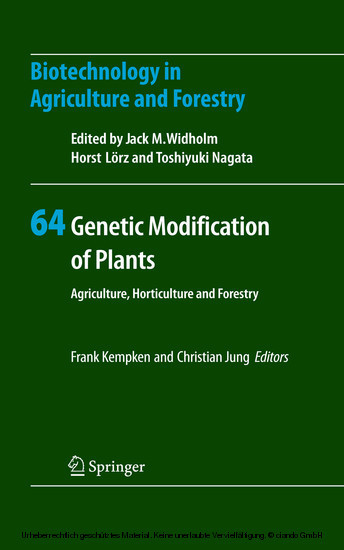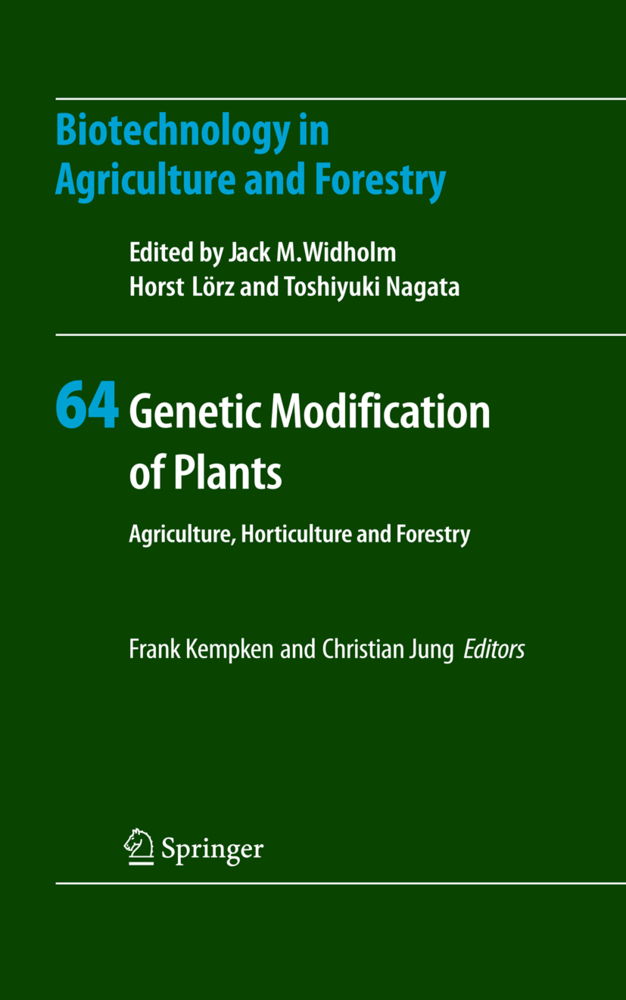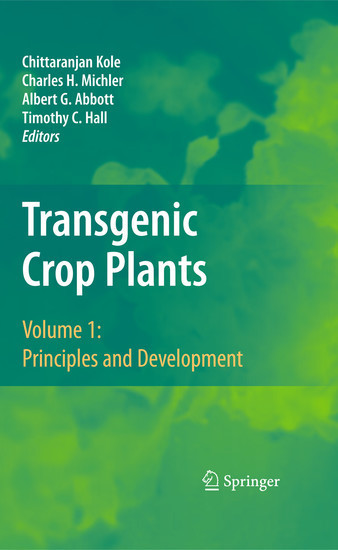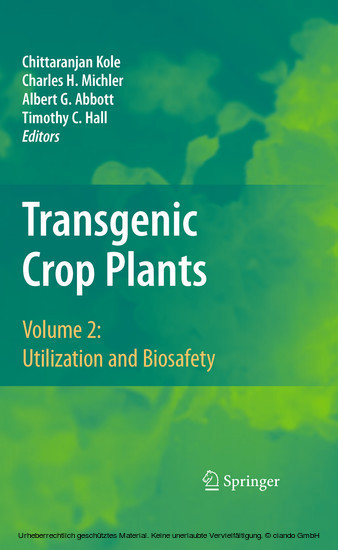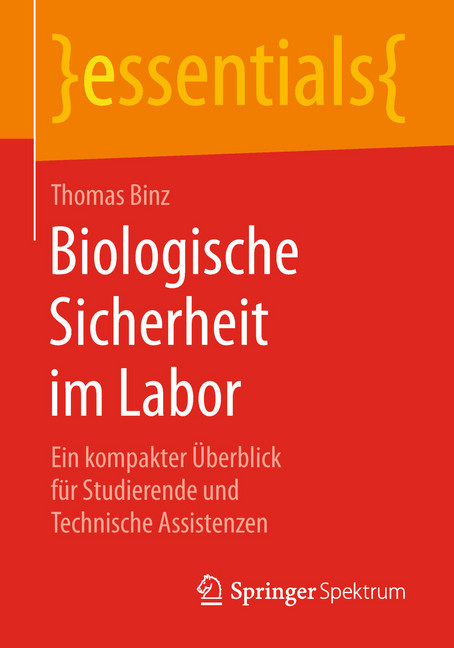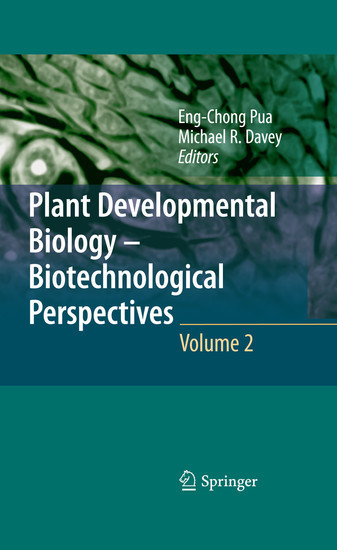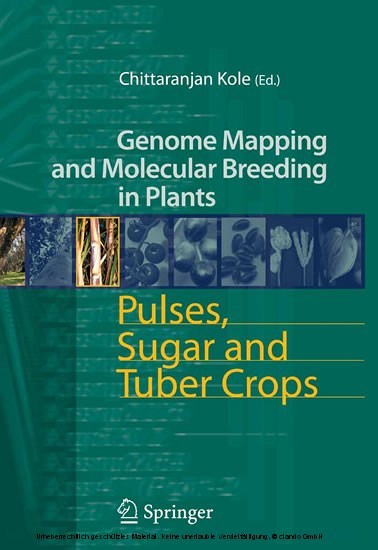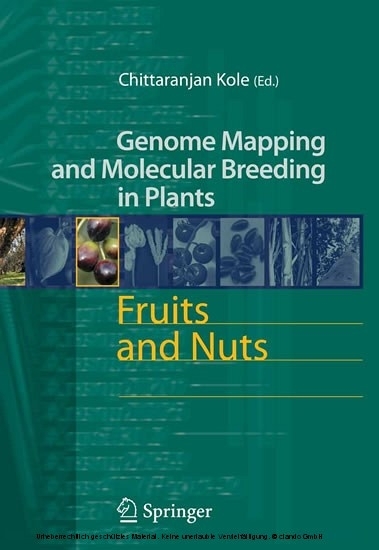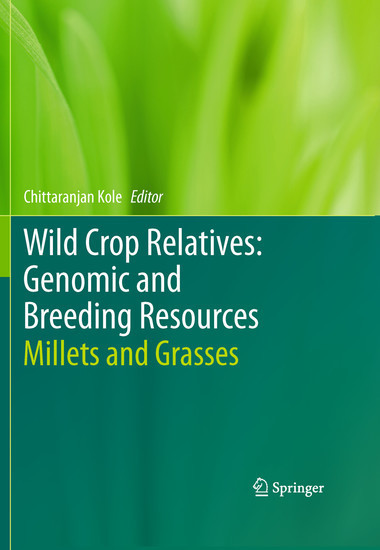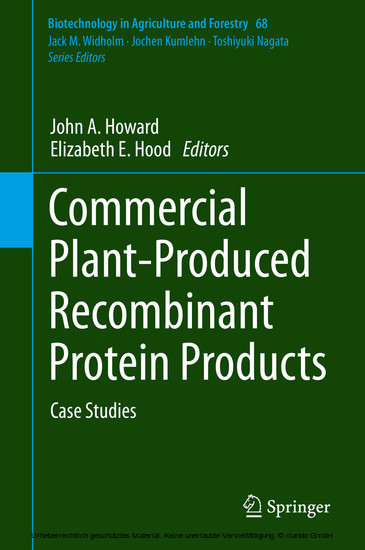Genetic Modification of Plants
Conceived with the aim of sorting fact from fiction over genetically modified (GM) crops, this book brings together the knowledge of 30 specialists in the field of transgenic plants. It covers the generation and detection of these plants as well as the genetic traits conferred on transgenic plants. In addition, the book looks at a wide variety of crops, ornamental plants and tree species that are subject to genetic modifications, assessing the risks involved in genetic modification as well as the potential economic benefits of the technology in specific cases. The book's structure, with fully cross-referenced chapters, gives readers a quick access to specific topics, whether that is comprehensive data on particular species of ornamentals, or coverage of the socioeconomic implications of GM technology. With an increasing demand for bioenergy, and the necessary higher yields relying on wider genetic variation, this book supplies all the technical details required to move forward to a new era in agriculture.
1;Part A: Generation and Analysis of Transgenic Plants;27 2;Chapter 1: Plant Nuclear Transformation;28 2.1;Introduction to Plant Transformation;28 2.1.1;DNA Introduction Basics;28 2.2;Transient Expression;29 2.2.1;Optimization of Transient Expression;30 2.2.2;Transient Expression to Study Gene Expression and Stability;30 2.3;Agrobacterium Background;31 2.3.1;A String of Improvements for Agrobacterium;32 2.3.2;Agrobacterium-- Plant Interactions;33 2.3.3;Reducing Agents;33 2.3.4;Agroinfiltration;34 2.3.5;Arabidopsis Floral Dipfloral dip;34 2.4;Particle BombardmentParticle bombardment;35 2.4.1;Gene Guns;36 2.4.2;Optimization of DNA Delivery;36 2.4.3;Control of DNA Integration Patternintegration patterns;37 2.5;Other Direct DNA Uptakedirect DNA uptake Approaches;37 2.5.1;Protoplasts;38 2.5.2;Whole Tissue Electroporation;38 2.5.3;Silicon Carbide Whiskers;39 2.5.4;Nanofiber ArraysNanofiber arrays;39 2.5.5;Pollen Tube PathwayPollen tube pathway;40 2.6;Evidence for Transformation;41 2.6.1;DNA Presence;41 2.6.2;Gene Expression;42 2.7;Conclusions;43 2.8;References;43 3;Chapter 2: Plastid Transformation;47 3.1;Introduction;47 3.2;Delivery of Transforming DNA to the Chloroplast;48 3.3;Vector Design;51 3.3.1;Flanking Regions;51 3.3.2;Promoters and UTRs;53 3.4;Transgene Stacking and Control of Gene Expression;54 3.5;Selection;55 3.5.1;Antibiotic Resistance Markers;55 3.5.2;Other Selection Markers;56 3.6;Marker Gene Excision;56 3.7;Analysis;57 3.8;Conclusions;58 3.9;References;58 4;Chapter 3: Concepts of Marker Genesmarker genes for Plants;62 4.1;Introduction;62 4.2;Criteria for Choosing the Marker Gene SystemMarker gene system;63 4.3;Availability of Selectable Marker GeneSelectable marker gene Systems and Alternatives;65 4.3.1;Positive Selection Marker;65 4.3.1.1;AntibioticsAntibiotics;65 4.3.1.1.1;Neomycin Phosphotransferase IINeomycin phosphotransferase II;66 4.3.1.1.2;Hygromycin Phosphotransferase;67 4.3.1.1.3;Antibiotic Resistance Genes Beside nptII and hph;67 4.3.1.2;HerbicidesHerbicides;67 4.3.1.3;Metabolic Analogous, Toxic, Non-Toxic Agents;68 4.3.1.3.1;2-Deoxyglucose-6-Phosphate Phosphatase;68 4.3.1.3.2;Xylose Isomerase;69 4.3.1.3.3;Isopentenyl Transferaseisopentenyl transferase;69 4.3.1.3.4;Phosphomannose Isomerasephosphomannose isomerase;70 4.3.2;Alternative Systems;70 4.3.2.1;Selectable Marker Gene Eliminationmarker gene elimination;70 4.3.2.1.1;Co-TransformationCotransformation;70 4.3.2.1.2;Recombinase-Induced EliminationRecombinase induced elimination;72 4.3.2.1.3;Transposon-Based EliminationTransposon-based elimination;73 4.3.2.1.4;Homologous RecombinationHomologue recombination;74 4.3.3;Screenable Marker GenesScreenable marker genes;74 4.3.4;Negative Selection MarkerNegative selection marker;75 4.3.5;Marker-Free TransformationMarker-free transformation Without Usage of Any Marker Gene;75 4.4;Conclusions and Perspective;76 4.5;References;77 5;Chapter 4: Precise Breeding Through All-Native DNA Transformation;84 5.1;Introduction;84 5.2;Examples of the Intragenic Modification in Potato;85 5.3;Requirements for the All-Native DNA Transformation of Potato;88 5.4;Intragenic Tomato (S. esculentum): Concentrating the Quality Potential of Tomatotomato into its Fruit;90 5.5;Exploring the Diversity of Solanaceous Crops;91 5.6;Intragenic Modification of Alfalfa: Optimization of a Forage Feed;92 5.7;Exploiting Native Genetic Elements for Canola Oilseed Improvements;93 5.8;Drought-Tolerant Perennial Ryegrass;94 5.9;Bruise-Tolerant Appleapple;95 5.10;Native Markers for Intragenic Transformation;95 5.11;Intragenic Crops Are at Least as Safe as Those Developed Through Traditional Methods;96 5.12;Conclusions;97 5.13;References;97 6;Chapter 5: Gene Silencing in Plants: Transgenes as Targets and Effectors;101 6.1;Introduction;101 6.2;Mechanisms of Gene Silencing;102 6.2.1;The Role of Small RNAs;103 6.2.1.1;MicroRNA Genes;104 6.2.1.2;Natural Sense--Antisense Gene Pairs;104 6.2.1.3;Viral Genomic RNA, Transcripts, and Replication Intermediates;104 6.
| ISBN | 9783642023910 |
|---|---|
| Artikelnummer | 9783642023910 |
| Medientyp | E-Book - PDF |
| Copyrightjahr | 2009 |
| Verlag | Springer-Verlag |
| Umfang | 675 Seiten |
| Sprache | Englisch |
| Kopierschutz | Digitales Wasserzeichen |

